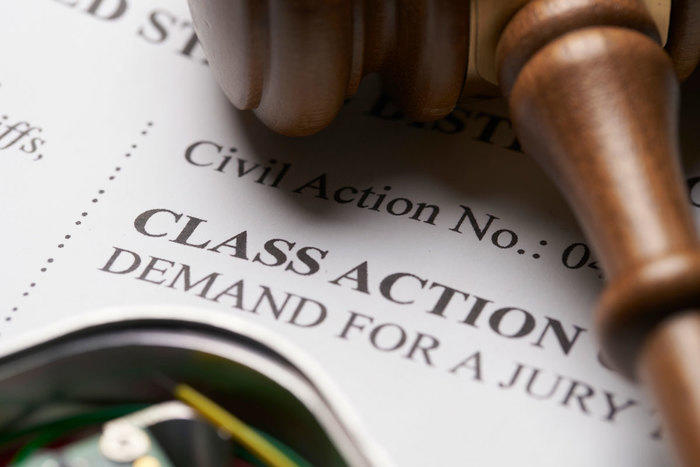Class Action Lawsuits 101: What You Required to Understand About Legal Actions
Wiki Article
Comprehending Class Activity Claim: A Guide for Attorney
Class action lawsuits have actually become an essential part of the lawful landscape, enabling the combination of multiple insurance claims into a solitary action. For legal representatives, understanding the intricacies of class activity litigation is essential in effectively representing their customers. This detailed overview explores the basics of class action claims, from determining prospective course participants to navigating the certification procedure. In addition, it delves into essential approaches for taking care of course activity litigation and offers understandings right into obtaining and working out approval for negotiations. By diving right into the ins and outs of course activity legal actions, this guide gears up attorneys with the understanding and tools required to efficiently navigate this complex area of regulation.The Basics of Class Action Legal Actions
Class activity lawsuits are a lawful device utilized to combine comparable cases from a team of people into a single suit, offering a cost-efficient and effective strategy to looking for justice and resolution. This type of suit allows a representative complainant, acting on part of the entire course, to bring an insurance claim versus an accused who has actually purportedly caused damage or broke the rights of multiple individuals.The fundamental demands for bringing a course activity lawsuit include numerosity, commonality, typicality, and competence of depiction. Numerosity refers to the fact that the class must be so large that joinder of all participants would be impractical. Commonness means that there have to be typical concerns of law or fact that are shared by all members of the course. Typicality needs that the insurance claims of the representative complainant are normal of the cases of the whole course. Competence of representation guarantees that the representative plaintiff will adequately represent the interests of the entire class.
Class action claims can be useful for both defendants and complainants. For complainants, it allows them to merge their resources and share the risks and expenses connected with lawsuits. It likewise provides an equal opportunity when they are up versus large companies or entities. For defendants, it provides the possibility to successfully deal with multiple claims in a solitary legal action, avoiding the need to prevent countless private lawsuits.
Identifying and Assessing Potential Class Participants
After developing the fundamental needs for a course activity suit, the following action is to determine and analyze potential course members. If they meet the necessary criteria., this process entails identifying that might be component of the class and reviewing their cases to determine.To identify potential course participants, legal representatives typically conduct extensive research study and collect appropriate information. This might involve evaluating records, performing meetings, and taking a look at records to recognize individuals or entities that might have been affected by the supposed wrongdoing. It is important to establish a clear and extensive list of possible class members to make certain that all impacted events are included in the suit.
As soon as prospective class participants have actually been identified, the next step is to evaluate their claims. If they satisfy the legal requirements for course accreditation, this involves assessing the values of each individual claim to identify. Legal representatives must thoroughly examine the truths, evidence, and lawful theories of each possible class participant's insurance claim to guarantee that they have a feasible situation.
Analyzing potential class participants also involves determining whether they fulfill the class definition and have endured similar injury as an outcome of the offender's actions. This calls for comparing the truths and conditions of each potential course member's scenario to the claims and lawful theories put forth in the lawsuit.
Navigating the Class Qualification Process
To successfully browse the course certification process, lawyers must vigilantly stick to the procedural requirements set forth by the court. Class certification is a vital action in a class activity claim, as it determines whether a situation can proceed as a class activity, representing a group of individuals who have similar claims against an accused. The process includes satisfying particular standards, such as numerosity, commonness, typicality, and adequacy of depiction.Firstly, attorneys have to develop numerosity by demonstrating that the class is so big that private joinder is impractical. This calls for a detailed evaluation of the defenses and insurance claims involved.
Following, legal representatives have to reveal typicality, which means that the depictive complainant's insurance claims are regular of the insurance claims of the class members. This makes sure that the interests of the representative plaintiff line up with the passions of the course. Lastly, lawyers have to demonstrate competence of depiction, suggesting that the depictive plaintiff and their counsel will rather and effectively represent the passions of the course.
To browse this procedure effectively, attorneys must thoroughly prepare by conducting considerable study, gathering evidence, and developing a compelling argument that satisfies each of these criteria. They must likewise be prepared to react to any type of arguments or difficulties raised by the offender. By vigilantly adhering to the procedural demands stated by the court, lawyers can boost their possibilities of obtaining class qualification and advancing the interests of the course members.

Trick Approaches for Handling Class Activity Lawsuits
Upon effectively navigating the class qualification process, attorneys should then apply essential strategies for properly handling course activity litigation. These techniques are important to make sure that the instance continues efficiently and efficiently, eventually making the most of the possibilities of a desirable result for the course members.
One secret technique is to establish a natural and strong legal team (Class action lawsuit). This entails setting up a team of attorneys with know-how in class action lawsuits, as well as other appropriate locations such as the particular market or topic included in the situation. A versatile team can bring various perspectives and abilities to the table, boosting the total performance of the lawsuits
Another important technique is to develop a well-balanced and comprehensive lawsuits strategy. This plan ought to describe the overall objectives of the case, along with the details lawful theories and arguments that will be pursued. It should additionally consist of a timeline and budget plan to guarantee that the case remains on track and within the allotted resources.
Additionally, legal representatives need to proactively engage with the course members throughout helpful resources the lawsuits procedure (Class action lawsuit). This includes providing normal updates on the development of the case, looking for input and responses from the class participants, and dealing with any issues or concerns they may have. By fostering open interaction and cooperation, legal representatives can build trust fund and support amongst the class members, which can be crucial in accomplishing an effective resolution
Clearing Up Class Action Lawsuits: Settlement and Approval
When it pertains to settling class activity claims, effective settlement and getting approval are crucial actions in achieving a resolution. Class action legal actions are complicated and entail a lot of complainants, making it important to get to a settlement that is fair and satisfactory to all events involved.
When a negotiation arrangement is gotten to, our website it must be approved by the court. The court's duty in this process is to make sure that the negotiation is reasonable, practical, and properly secures the interests of the course participants. The court will certainly take into consideration factors such as the nature of the claims, the stamina of the proof, the prospective healing for the class members, and any objections increased by class members.
Obtaining court authorization is crucial as it gives finality to the negotiation and shields the passions of the course members. It guarantees company website that the settlement is binding and enforceable, and class participants can get their rightful payment.
Final Thought

Course activity suits have ended up being an important part of the lawful landscape, enabling for the debt consolidation of multiple cases into a solitary action. Class qualification is an important step in a course action claim, as it identifies whether a case can continue as a class action, standing for a group of people who have comparable insurance claims versus an accused. By faithfully adhering to the procedural requirements established forth by the court, attorneys can increase their opportunities of obtaining class qualification and advancing the rate of interests of the class participants.
The court will think about factors such as the nature of the insurance claims, the stamina of the proof, the potential healing for the course participants, and any objections elevated by class members.
By determining and analyzing potential class members, legal representatives can determine the viability of a course activity lawsuit.
Report this wiki page